The Roman Empire: SPQR
Part I of Dmitry Galkovsky's series of blog posts on the history of Rome and Christianity. An original translation.
The Roman Empire: SPQR
The main problem with world history is the disconnect between its ancient and new parts.
The quantity and quality of historical facts diminishes rapidly as one plunges into the abyss of time. I can tell you when a single picture emerges - it is 1650. 1600-1650 raises a lot of questions and inconsistencies, 1550-1600 shows gaping holes in the historical fabric. 1500-1550 is holey rags, 1450-1500 is specific rags with unclear meaning. In 1400-1450 you can guess something at the level of "something white turns black, something black turns white". And before 1400 is the abyss of nothingness, the World Night. In fact, all the historical “facts” before 1400 became known much later, and those facts are kind of moldy and miserable. It reminds one of the Soviet children’s game "secrets", when kids dug holes, lined them with pieces of mirrors and foil, and put in "treasures" in the form of colored pebbles and chocolates. KINDERGARTEN STUFF.
In general, this is normal and it would be strange if it were otherwise. This is how world history should develop on any planet. The cement that binds the historical factography is printing. Truly, "what is written with a pen, you cannot cut out with an axe”. As long as there are at least a hundred copies. Even a hundred copies are virtually indestructible. Writing comes before high-tech book printing, and handwritten reproduction (sometimes giving not hundreds of copies, but thousands) makes it possible to preserve historical memory “im Großen und Ganzen”. Writing before the printing press is a fragile thing, much can be lost, but the pre-press period is 100-200-300 years of manuscript reproduction, and in general the transmission of verbal knowledge goes on here as well. What happens earlier is always obscure. So, it all makes sense.
But two problems arise. First, 1650 as a frontier of absolutely reliable knowledge is surprising in its complexity. It is a very high technological and intellectual culture, generally not unlike modern times. By comparison, the logarithmic ruler was invented in 1622. It is quite STRANGE that people with this level of intellectual culture lived in the era of "here I remember and here I don't remember". They weren’t teenagers. 1650 is amazing in its perfection. Figures emerge from the fog and begin to act with clockwork precision. Everything is very rational and clings to one another with intellectual perfection - technology, diplomacy, demographics, science. An evolved man of 1650 can be safely put into an UN assembly or launched into space. His hands won’t shake. He might even teach us a thing or two.
But that is not the main thing. Diving on a bathyscaphe deep into the centuries and skipping 1300, 1200, 1100 – which lie in total darkness –, suddenly around the year 400 we see discernible details, and two centuries earlier we are illuminated by the light of ancient civilization – with politics, philosophy, developed technology and in general a common culture.
The height of the Colosseum is 48.5 meters. For comparison, you can look up the height of the Luzhniki stadium in Moscow. I wanted to put in the exact figure, but I couldn’t find the exact height even after ten attempts. Сountry of Fools.
All thoughts about the falsification of Antiquity can be immediately discarded. The remnants of Antiquity exist on a huge scale. Sometimes they are enormous in and of themselves. There are theaters, stadiums, hippodromes, temples, aqueducts, roads – all this splendor exists in a huge area and very densely. It is impossible to fake this under any circumstances, and it is quite clear that the vast majority of these ruined or very dilapidated monuments existed before 1650 and probably before 1400. Often, they are indeed ruined or abandoned in places now sparsely inhabited. The degree of their uniformity is striking – they are very similar and were clearly made according to a set of uniform rules and instructions, often on an empty site. Like the construction of the city of Slavutych at the Chernobyl nuclear power plant. An engineer came and built it. By decision of the Politburo of the CPSU Central Committee. Most ancient cities have a standard layout.
Antiquity left the greatest intellectual monuments, which are also impossible to forge. Writing a medieval chronicle or Avvakum's speeches is an easy task even for someone like Stalin. It's no big deal. But the apology of Socrates is high literature, and Aristotelian logic is a serious science. You’d have to spend more than a couple of evenings in a seminary for this –more like a whole life, a life in the context of high intellectual culture.
There's another thing about Antiquity that's striking. It is a high civilization with clearly lost links. Many ancient things are fixed, but people did not understand their functional purpose for a long time. Or they understood them, but couldn’t reproduce them. This suggests that a catastrophe has occurred with antiquity. That is, the "Dark Ages," the "Middle Ages" really existed.
Here are just two examples of the Post-Apocalypse that happened.
In Antiquity there was mass sport with all its attributes and infrastructure. This was a system of awards and competitions, huge stadiums and hippodromes, associations of fans, advertising, management, etc., etc. All of this did NOT exist in the 19th century. Only horse racing existed, but in a greatly reduced form, and in Spanish-speaking countries bullfighting was preserved as a rudiment (“Corrida”).
So, the man of 1700, 1800, 1850 and even 1900 did NOT KNOW what was going on in the ancient stadiums. In 1900 a few people from the European super-elite knew it, who consciously began to revive the Olympic movement, understanding that if you reproduce this segment of Antiquity, you will get a multibillion-dollar business and increase the general level of culture of the population. But they, too, saw the future sport of the 20th century, of course, very tentatively and speculatively.
The poor Romans were supposed to pay money to look at such dull pictures. For a Christian, this picture was not depressing; in the 19th century, art academies gave out big medals and a trip to Italy for something like this. The problem was that non-Christians went to the Colosseum, and they were not interested in watching the torment of Christians, nor in the triumph of Christians. It was like the average American watching Mormons.
Even in the 19th century it was impossible to read what was written about ancient sports without crying. The Colosseum was believed to be an apparatus for mass executions, where poor Christians were tortured. There they were crucified on crosses, thrown into the air with catapults, fed to wild beasts, or at least dressed in armor and forced to fight each other to the death.
Smarter people thought these were excesses, and the Roman sport was based on gladiatorial battles, i.e., professional fighters who slaughtered each other to death for the public's amusement. But even these clever people didn't think of a self-evident thing. Namely that according to their own words a gladiator was an expensive thing, gladiators were chosen and trained for a long time in a special theatrical school, famous gladiators were stars and cost a lot of money. So killing gladiators is as ridiculous as killing famous actors or famous racehorses.
So the coliseums were either circus attractions, where trained men killed animals with minimal risk to themselves (like bullfighting), or staged productions like modern wrestling, with artificial blood and almost artificial carnage. There could be nothing else, simply for reasons of commerce.
By the way, in full compliance with the canons of the genre, women and... dwarfs also acted as gladiators.
Even the animals were taken care of, because a large part of the performances were done with trained animals, which were used in usual circus tricks - sticking heads into the lions’ jaws, etc.
European sports through the eyes of barbarians. Even in the middle of the 19th century, the Colosseum was supposed to be a Christian church. They wept there, mourning the brutal martyrdom of football players.
Today's soccer may just as well be portrayed as mass hecatombs with kicking a severed head-ball and making soap out of the losing team.
Nor did they understand the behavior of fans in the 19th century, portraying the struggle between the sporting parties as massacres and an example of "ancient barbarism”.
It is interesting that Christians, after all, did not think of portraying ancient racetracks as an instrument of mockery for the adherents of the t̶o̶t̶a̶l̶i̶t̶a̶r̶i̶a̶n̶ ̶c̶u̶l̶t̶ world religion. Like, “they would hunt naked Christians and then trample them to death with specially trained horses”. The fact is that horse racing in the 19th century was quite popular, although exclusively in the upper class. And in the 18th century and earlier tit was preserved as an element of military training. Therefore, insulting horse races was forbidden.
Similarly, the ancient theater was not dared to be slandered. To one degree or another theater survived, and to portray Sophocles' plays as a script for the public executions of members of a̶ ̶t̶o̶t̶a̶l̶i̶t̶a̶r̶i̶a̶n̶ ̶c̶u̶l̶t̶ the world religion was, after all, ridiculous. People wouldn't have understood.
But sports had died out so that all sorts of nonsense could be spun on nothing. Like people who had never been to America and seriously believed in the horrors of the New York smog and scary "policemen" with batons and handcuffs.
Adepts of the “New Chronology” are obsessed with the idea that the Colosseum is a fake from the Renaissance period, it never functioned, was never completed, etc. But the problem is that many giant amphitheaters have survived. For example, the coliseum of the second-rate town of Pula (Croatia). It had a capacity of 22,0000 spectators. For comparison, that is the whole population of Tula in the early 19th century.
A Roman amphitheater in 18th century Arles. It is interesting how it was improved. In the 20s of the 19th century, all the buildings inside the amphitheater were destroyed and the inhabitants were relocated; in 1830, a show was staged there to celebrate the annexation of Algeria (which was presented as a revival of Roman colonization of North Africa), then they began to stage bullfights and finally, occasionally, sports and circus shows. This is how the terrible ancient sport was gradually revived in Europe.
This is an AMAZING fact.
And here is an example of "forgotten knowledge" in the field of material culture.
Everyone has heard about the ancient aqueducts. These are enormous structures, capable of impressing even the 21st century man. But the pygmies of the 19th century had the nerve to babble that the system of ancient water supply was primitive, that the Romans did not know this, did not know that, and built cyclopean aqueducts where they were not needed. In fact, water pumping systems were known to the Romans, and in aqueducts it was used where needed. It's just that if people KNOW how to build huge aqueducts with mathematically precise slopes, this translates to huge savings in ease of operation and capacity.
Ancient aqueducts usually didn't stop working until a few decades after the last plumbing engineer was killed (the plumbing was gradually clogged with sediment.)
The aqueduct in Segovia, Spain. What are usually called “aqueducts” are their visible part - 90-99% of aqueducts run underground, sometimes at great depths. The total length of an aqueduct can exceed 100 km.
The Pont du Gard aqueduct in southern France. In the Post-Apocalypse, it stopped working and this part was used as a bridge for several centuries. Despite the holes carved out for the passage of carts, the "bridge" has successfully survived to this day. The height of the aqueduct is about 50 meters. The aqueduct was built with monstrous precision - its slope is 34 cm per kilometer over a total length of 50 km.
Of course, in the 18th and 19th centuries, the new Europeans still grunted at aqueducts, but it finally became clear to them just HOW superior the ancient people were only in 1938. At the time, German engineers were conducting geological investigations for a water pipeline for the town of Mechernich, and accidentally stumbled upon the Eiffel underground aqueduct. Some of its fragments had been known since the middle of the 19th century, but here people were able to see the big picture. This huge hydraulic structure supplied water to ancient Cologne ("Cologne" is "Colonia Agrippina"). The Romans had to build a frost-free water supply system in rugged terrain, so they did what had to be done (they always did what had to be done when they had to do it). The ancient engineers dug into the ground an intricate, winding water pipeline 130 kilometers long, supplying fresh water from mountain springs. German engineers saw the scheme, saw where, how, and why people made it, and began to cry bitter tears. Because this was the level of hydraulic engineering in the middle of the 19th century. Back at the beginning of the 19th century, they would not have been able to handle such a task. Just the geological survey and general layout took two years of work by a large team of engineers. It is not the same as the simple building of a pyramid. There are dozens of technical tasks, georeferencing, elaborate infrastructure and subsequent maintenance.
It is believed that the aqueduct of Eiffel worked for 180 years, and then clogged with water sediment. In addition, its protruding sections on the surface were dismantled for the construction of a Christian cargo cult. The sediments themselves in the tunnels of the aqueduct were also used for the cargo cult. They were pressed into the likeness of marble and members of a̶ ̶t̶o̶t̶a̶l̶i̶t̶a̶r̶i̶a̶n̶ ̶c̶u̶l̶t̶ the great religion began to use them to decorate their cargo churches.
A Christian church column carved from parts of the Eiffel Aqueduct. Appreciate the picture. First, the "Virgin Mary" is invented as a cargo version of the "Marine virgin", i.e. the sea-maiden Aphrodite, then her images are places against the sewage sediments of Aphrodite's civilization.
By all accounts, if engineers were now tasked with making a similar water pipeline, they, for all their instruments and computers, wouldn’t be able to come up with a better route. In 1938, people also weren’t idiots and incorporated a fragment of the discovered water pipeline into the existing system. It still seems to be working today. It is believed that if one were to repair a couple damaged sections of the Eiffel aqueduct, it would still work as a whole. While complying with all environmental and technical standards of the EU.
Around the middle of the 19th century, European cities finally reached the environmental standards of antiquity. For example, in the Roman Empire, public toilets were supplied with water.
So, what do we have.
1. The history of ancient civilization, which gradually reached a high level of culture, but for some reason died.
2. A period of "Dark Ages" of unknown duration.
3. The New Age, emerging out of the darkness suddenly and in all its details.
It is tempting to simply remove the second stage and accept as a working hypothesis that antiquity without noise and dust transformed into a new time. But then two things remain unclear: firstly, what is the reason for such a split of a single civilization, and secondly, how could there be such a significant and long-term decline in material culture. After all, in the period 1650-2011 that we know of reliably, no such downgrading has ever been observed. Judging by the surviving fragments of 1500-1650 there is nothing like that either.
That said, the "firstly" can still be explained by a tendency towards a general homogenization of reality. If someone wants to sharply increase the nobility of his family and reliably knows his great-great-grandfather, great-grandfather, grandfather and father, it is most productive to insert missing links between great-great-grandfather and great-grandfather. Then the real evidence about the great-great-grandfather will also verify the authenticity of the inserted ancestors.
The "secondly" remains unclear - why did they degenerate so badly?
I think it is productive to look at some social institutions preserved "before" and "after" and trace their history. The missing link in the middle can be relatively plausibly reconstructed.
Religion is not suitable for such a reconstruction. The history of religion is an element of religion itself, its character is most fantastical. It seems to be believed that Christianity appeared in antiquity, but so believes the Christian church-ideological apparatus itself. Its obvious task is to make itself appear as old as possible.
Similarly, the 18th century English idiots from the "Goose and Gridiron" tavern traced Freemasonry from the era of Rome, or even ancient Egypt.
That's their own problem, and people who aren't verbally intoxicated don't give a crap.
I think a good subject is the so-called "Roman Empire”. It was officially founded in minus 27 and ceased to exist in 1918. Of course it did not exist for two thousand years, so much should be obvious to anyone. But clearly it has been around. Here and there.
So it's worth taking a close look at the official history of the organization, then removing the obvious absurdities and trying to reconstruct the missing "middle part." The Middle Ages, invented in the 19th century, of course, were not real, and could not be. But a “middle part” undoubtedly existed. Because the torso of the beastie begins under the ancient sun, then disappears into the darkness and ends in our time. We can see the legs and butt and the head and arms, and we can try to fill in the belly.
It is important to understand that we do not know that much about the so-called "Roman Empire”. The era was, if not "no-print", then "pre-print”. The amount of information about so-called "Rome" compared to the so-called "Middle Ages" is of course gigantic, but there are several layers of later appropriations to dig through and much has simply been forgotten.
For example, one constantly sees the acronym “SPQR”, which is the ancient “CCCP” for Rome. It is thought to mean "Senate and Citizens of Rome". But that is doubtful. Philologists count a dozen interpretations of the exact transcription - all with problems, and there is no direct proof. One can of course dream that somewhere in Europe there is a mouse who knows everything, but “SPQR” to me is a symbol of the fragmentation of ancient culture. Everything is difficult. And talking to a Classicist is like talking to a wall. He KNOWS EVERYTHING. For him, the birth year of a minor senator is the Second law of thermodynamics. "It can't be otherwise", "the world is falling apart".
Original post by Dmitry Galkovsky, translation by RWA.




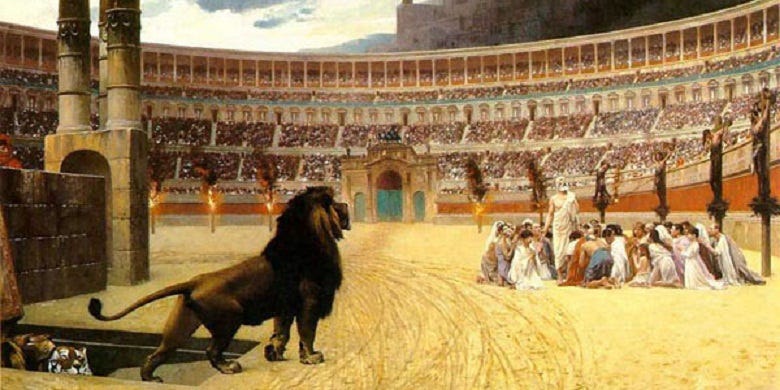

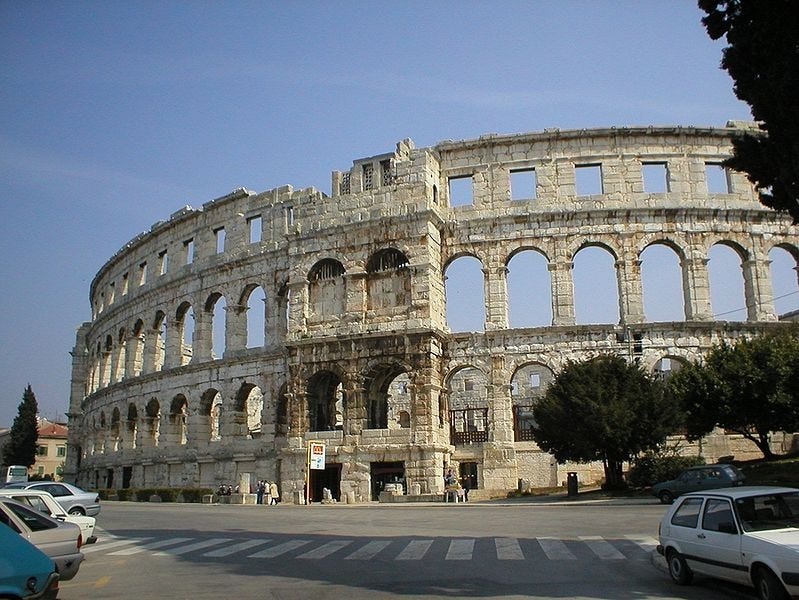
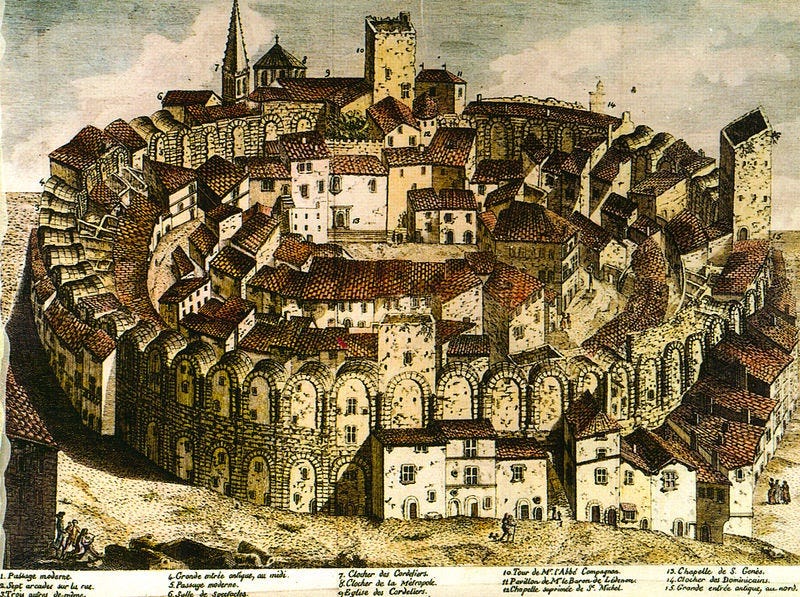
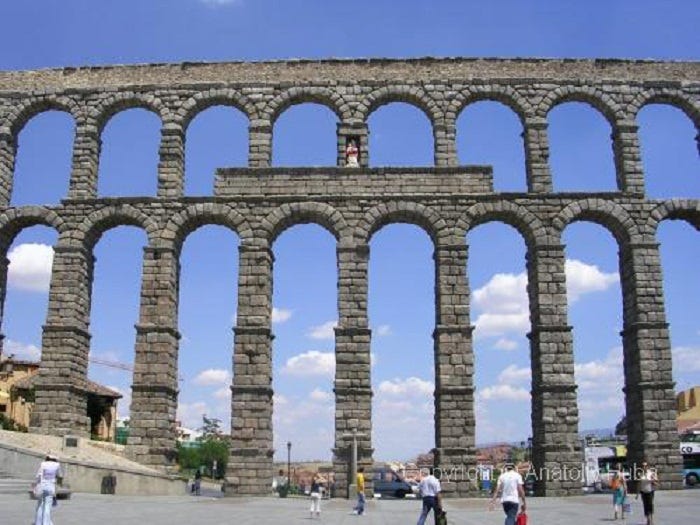
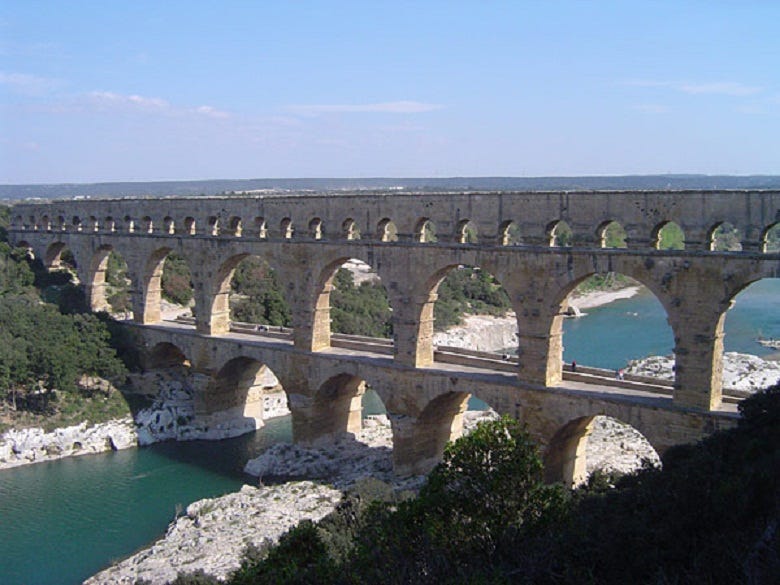
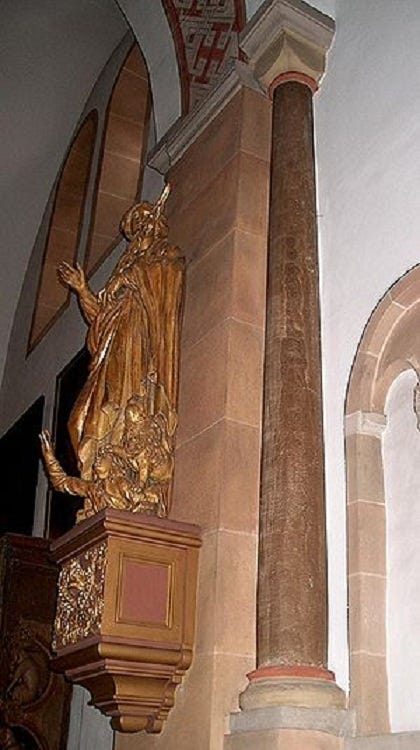
An interesting perspective, but I must disavow the comments on Christianity. Also worth noting that "Rome" did not die with antiquity, but endured with much the same technology level as it had previously well into what we call the Middle Ages, falling only in 1453, despite adopting what Galkovsky dismisses as a cargo cult as her state religion. It was the practitioners of that same "totalitarian cult" that were on the cusp of steam power in the 14th century, and those same "cultists" in the East that had preserved the writings of Antiquity enjoyed today.